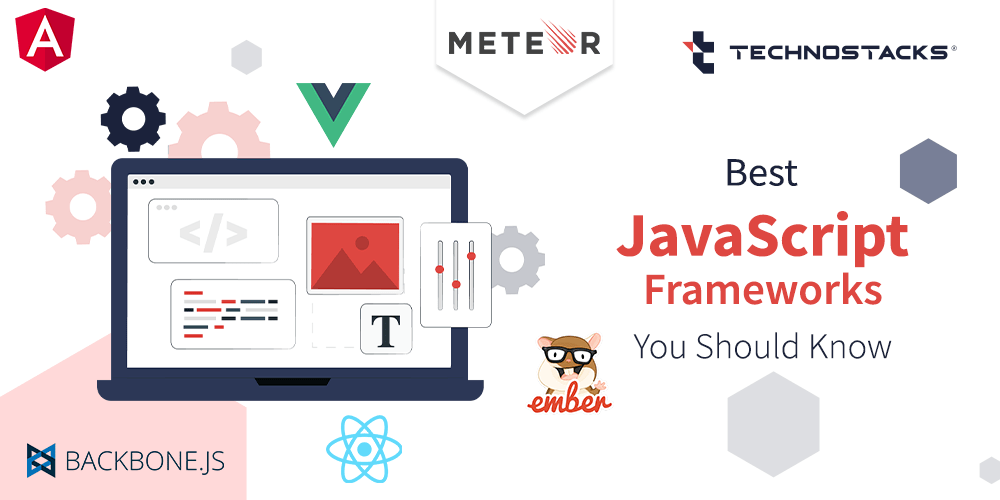Bydly Insights
Explore the latest news, trends, and insights across various topics.
Framework Face-Off: Which JavaScript Sorcerer Wields the Best Wand?
Discover which JavaScript framework reigns supreme! Dive into our face-off and find out which sorcerer wields the best wand.
Top 5 JavaScript Frameworks Compared: Which One Reigns Supreme?
When it comes to developing modern web applications, choosing the right JavaScript framework can significantly impact your project's success. In this article, we will compare the top 5 JavaScript frameworks, each bringing unique features and advantages to the table. From React and Vue to Angular, Svelte, and Ember, we will break down their key characteristics and help you determine which framework might reign supreme for your needs. Here’s a quick overview of what you can expect from each:
- React: Known for its flexibility and component-based architecture.
- Vue: Offers an easy learning curve while maintaining powerful capabilities.
- Angular: Best for building large-scale applications with a comprehensive solution.
- Svelte: A newer contender that compiles components at build time for maximum performance.
- Ember: Provides a robust framework that takes care of a lot of the boilerplate code.
With such a diverse selection available, it’s crucial to assess your specific development needs and team expertise before making a decision. Let's dive deeper into their features, community support, and potential use cases to see which one truly stands out as a leader in the JavaScript ecosystem.

The Ultimate Guide to Choosing the Right JavaScript Framework for Your Project
Choosing the right JavaScript framework for your project can be a daunting task, especially with the plethora of options available today. Whether you are building a simple web application or a complex enterprise solution, the **framework** you select will have a significant impact on your development process and the final product. To start, consider the specific requirements of your project, such as scalability, performance, and the skill level of your development team. Some popular frameworks include React, Angular, and Vue.js, each offering unique advantages and trade-offs. Here are three key factors to keep in mind when making your decision:
- Community Support: A strong community can provide valuable resources and help you troubleshoot issues.
- Learning Curve: Assess how easy it will be for your team to learn and adopt the framework.
- Performance: Evaluate how well the framework meets your performance needs, particularly for larger applications.
Once you have a good understanding of your project's needs, the next step is to evaluate the JavaScript frameworks in-depth. Look into factors such as **documentation**, available plugins, and the framework's architecture. For instance, if you need to build a highly interactive user interface, you might lean towards React for its component-based approach. Conversely, if you're looking for a complete solution with built-in features, Angular might be a better fit. Don't forget to consider the long-term implications of your choice, including maintainability and the potential for future updates. Ultimately, the right framework can enhance your productivity and the quality of your project, making it crucial to invest time in this decision.
Framework Showdown: React vs. Vue vs. Angular - What You Need to Know
When choosing a JavaScript framework for your project, understanding the differences between React, Vue, and Angular is crucial. React, developed by Facebook, is renowned for its component-based architecture, allowing for efficient UI updates through a virtual DOM. Its focus on a declarative programming paradigm makes it easy to create interactive UIs. On the other hand, Vue is often favored for its lightweight design and simplicity, offering a progressive framework that can be incrementally adopted. Lastly, Angular, created by Google, is a powerful framework that incorporates TypeScript and is ideal for building large-scale applications thanks to its robust features like dependency injection and two-way data binding.
In terms of community support and ecosystem, React has a vast ecosystem with a multitude of third-party libraries, while Vue is rapidly growing, particularly in the Asian market. Meanwhile, Angular benefits from a strongly opinionated architecture, which can be advantageous for teams looking for out-of-the-box solutions. Yet, the choice ultimately depends on specific project requirements and team expertise. Below are some factors to consider:
- Learning Curve: React is easier for beginners, Vue offers a gentle learning curve, while Angular can be challenging due to its complexity.
- Performance: React and Vue generally have better performance due to their efficient rendering techniques, while Angular may be less performant for smaller applications.